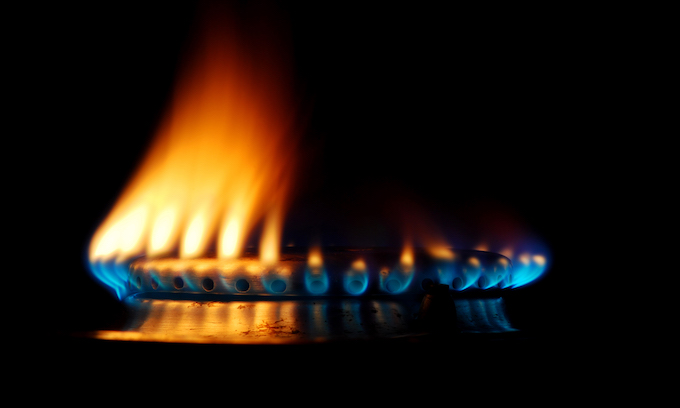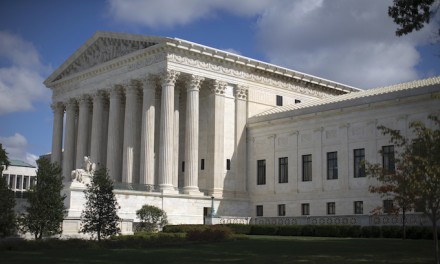TRAVERSE CITY — Suttons Bay resident Bill Hathaway will bear the brunt of rising propane prices to keep his home warm this winter, paying about $1,000 more than he did last year.
The U.S. Energy Information Administration predicts households depending on propane for heat will spend 54 percent more than last year, those using natural gas will spend 30 percent more, and those that heat with electricity will spend 6 percent more. And with a season that is expected to be a little colder than last year, households will likely use more fuel.
Hathaway, 85, keeps his house at a chilly 60 degrees throughout the winter. Last year he reached out to Leelanau Christian Neighbors, which helps seniors in need pay their heating bills. He also took advantage of federal money that was available, he said.
This year, thanks to a federal Weatherization Assistance Program, the retired machinist is getting a new steam generator that will cut his heating costs.
“This is what I paid taxes for all those years so I don’t feel bad,” Hathaway said, though he’d rather not have to take the help.
About 5 percent of households nationwide heat with propane. In Michigan, which uses more propane than any other state, about 320,000 homes heat with propane.
The biggest reason for this winter’s higher heating bills is the recent surge in prices for energy commodities after they dropped to multi-year lows in 2020. Demand has grown faster than production as the economy has come back to life after shutdowns caused by the coronavirus.
This week, the average propane price across Michigan is $2.47 per gallon; in 2020 it was $1.65, and in 2019 it was $1.69, according to the EIA, the statistical arm of the Department of Energy.
Sheila Wick is the office manager for Bayshore Oil & Propane in Northport. There are a few reasons causing prices to shoot up, she said, with the biggest one being the COVID lockdown.
“There wasn’t a lot of production because a lot of the plants were shut down,” said Wick, whose husband owns the company.
Plants reopened to a worker shortage, she said, and are unable to keep up with demand.
“It’s the same with gasoline,” Wick said. “I don’t know where the people went.”
Most propane companies pre-buy for winter, letting customers lock into prices for the season so neither has to weather the storm of a fluctuating market.
At Bayshore, which serves about 2,000 customers in Leelanau, Grand Traverse and Benzie counties — including Hathaway — all are automatically locked into prices from Oct. 1 through March 31. Still, this year’s locked-in price of $2.14 per gallon is about 46 percent higher than last year’s $1.47. The average residential propane use in winter is 1,000 to 1,200 gallons, she said.
“It’s a huge increase,” Wick said.
Lt. Matthew Winters of the Salvation Army said the agency is ready to help people with their higher heating bills. The Salvation Army works with the state Emergency Assistance Program and has its own Project Good Neighbor fund, which comes from local donations.
This Christmas donations are high again, as they were last year in the midst of the pandemic and job losses, Winters said.
“We will be able to cover (higher heating costs) — absolutely. This community is generous,” he said.
Winters said because there was lots of federal assistance last year the number of people who consistently ask for help dropped off. But there were also lots of people who needed help for the first time.
“We saw families struggling, almost embarrassed to ask for help,” Winters said.
Brad Morrill, chief customer experience officer with Crystal Flash, said the majority of the company’s clients have already locked in their fuel price, which is for the entire year from June 1 to May 31. He declined to say what the price is as the company serves much of the state and prices vary from region to region.
“Those that have not locked up their price can easily expect to fluctuate with the market price,” Morrill said.
Some customers feel like there’s a potential to pay less because they can take advantage of the price drop in March and April and their costs may even out, he said.
But it’s a big risk, especially this year, he said. There is also a delivery fee for those who pay the market price.
The overseas market is contributing to the high prices as nearly half of the country’s 2 million-barrel-per-day production is exported to Asia, Latin America and Europe. It’s a dramatic shift from less than a decade ago.
Stores of U.S. propane and propylene, a fuel similar to propane, decreased by 0.2 million barrels to 74.6 million barrels as of mid-November — a more than 13 percent decrease from the five year average inventory levels from 2016 to 2020, according to the EIA.
Producers have become better at shipping propane and natural gas, which are highly volatile substances, and are not stockpiling as they have in the past, Wick said.
“The overseas market is in high-demand, as even businesses are getting a Propane Commercial Generator Installation as a backup, which has led to producers here are sending it overseas,” Wick said. “We just don’t have the backup supply that we normally have.”
___
(c)2021 The Record-Eagle (Traverse City, Mich.)
Visit The Record-Eagle (Traverse City, Mich.) at record-eagle.com
Distributed by Tribune Content Agency, LLC.
—-
This content is published through a licensing agreement with Acquire Media using its NewsEdge technology.



















With the high heating bills, we can all live in cold caves in the winter, so we will not cause “global warming”, right Joe and Kamala?
WELL most of those states are ones where biden WON.. So they are getting what they voted for!
Another way to hit the rural citizens since it is more common to heat with propane when you live outside a city. Since more rural people vote conservative it hurts the people the administration cares about the least.
That’s because most rural areas, are NOT on the “Grid” meaning the state/county power companies… That’s why they have to use propane…